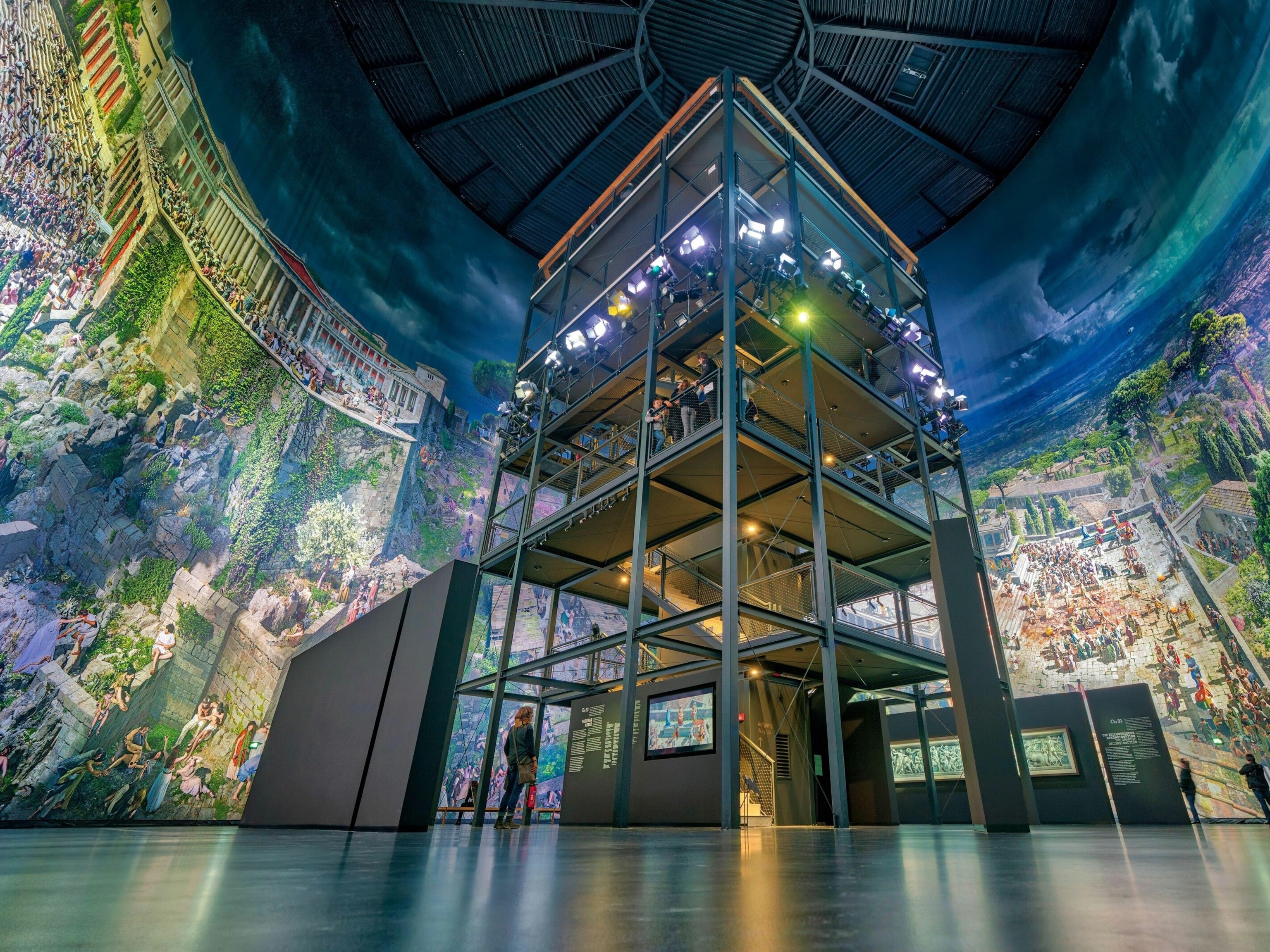Insider’s Guide to Cold War Berlin
During the Cold War, the Berlin Wall came to represent Germany’s divided nation and capital. Though mostly dismantled now, it remains a potent presence, marked by sites that hark back to a sinister time in the city’s history.
> What to See:
The Bornholmer Street border crossing is where the Wall first was breached, on November 9, 1989, following a surprise announcement by East German officials that border controls were being loosened. East Germans flocked to the crossing, overwhelming guards, who soon lifted the gates. As the news spread, Berliners gathered at the Brandenburg Gate, totem of the city, which President John F. Kennedy visited before proclaiming “Ich bin ein Berliner” during his famous Cold War speech.
Just to the north looms the Reichstag building, where Germany’s reunited Parliament first convened; damaged in World War II and abandoned by East German officialdom, it was renovated and reopened in the 1990s. To see one of 302 watch towers that secured the Wall, visit the Berlin Wall Memorial.
Eight blocks away, the Wall’s most heavily guarded section, called the “death strip,” has been transformed into the Mauerpark, or “wall park.” Still visible is a hundred-foot-long part of the Wall. To the south you’ll find Checkpoint Charlie, the border crossing in the American sector that became a symbol of the Cold War and has figured in many films.
Ostalgie, or “nostalgia for the East,” informs the DDR Museum, which documents life in the East German republic; artifacts include an iconic Trabant car.
Nefarious doings of East Germany’s secret police, or Stasi, are detailed in an exhibit at the Stasi Museum, in the headquarters of the former Ministry for State Security. The longest remaining segment of the Wall, dubbed the East Side Gallery and featuring murals by international artists, extends along Mühlenstrasse, in Friedrichshain.
Communist East Berlin, builder of the Berlin Wall, had its share of statues commissioned by its powerful Soviet partner. The largest: the Soviet War Memorial in Treptower Park, honoring Soviet soldiers who died fighting Nazi forces in the 1945 Battle of Berlin.The central statue of a Soviet soldier standing on a broken swastika and holding a German child he rescued is ringed by 16 sarcophagi symbolizing the Soviet Union’s satellite states.
Four Cold War prisoner exchanges took place on the Glienicke Bridge (nicknamed “Bridge of Spies”) in the Wannsee area—including the return of U-2 spy plane pilot Francis Gary Powers.
> What to Read:
The Berlin Wall: A World Divided, 1961-1989, by Frederick Taylor. Documenting the erection and fortification of the barrier, historian Taylor conveys the political realities of Berlin during the Cold War.
The Wall Jumper: A Berlin Story, by Peter Schneider. West Berliner Schneider’s novel, published six years before the Wall fell, personalizes life in Cold War Berlin with a tale of a man crossing the Wall repeatedly to see family and friends.
> Travel Trivia:
- Parts of the Berlin Wall can be found in Taiwan, Vatican City—and a men’s bathroom in a Las Vegas casino.
- Some ways East Berliners tried to cross the Wall: in hot-air balloons and along a carefully placed tightrope.
- From 1961 to 1965, the Wall actually was a fortified wire fence; it took years to build the concrete structure.
This piece was written by National Geographic Traveler researcher Christine Blau and first appeared in Traveler‘s November 2014 issue to accompany a feature written by Andrew Curry entitled “Off the Wall.”
You May Also Like
Go Further
Animals
- This ‘saber-toothed’ salmon wasn’t quite what we thoughtThis ‘saber-toothed’ salmon wasn’t quite what we thought
- Why this rhino-zebra friendship makes perfect senseWhy this rhino-zebra friendship makes perfect sense
- When did bioluminescence evolve? It’s older than we thought.When did bioluminescence evolve? It’s older than we thought.
- Soy, skim … spider. Are any of these technically milk?Soy, skim … spider. Are any of these technically milk?
- This pristine piece of the Amazon shows nature’s resilienceThis pristine piece of the Amazon shows nature’s resilience
Environment
- Are the Great Lakes the key to solving America’s emissions conundrum?Are the Great Lakes the key to solving America’s emissions conundrum?
- The world’s historic sites face climate change. Can Petra lead the way?The world’s historic sites face climate change. Can Petra lead the way?
- This pristine piece of the Amazon shows nature’s resilienceThis pristine piece of the Amazon shows nature’s resilience
- Listen to 30 years of climate change transformed into haunting musicListen to 30 years of climate change transformed into haunting music
History & Culture
- Meet the original members of the tortured poets departmentMeet the original members of the tortured poets department
- Séances at the White House? Why these first ladies turned to the occultSéances at the White House? Why these first ladies turned to the occult
- Gambling is everywhere now. When is that a problem?Gambling is everywhere now. When is that a problem?
- Beauty is pain—at least it was in 17th-century SpainBeauty is pain—at least it was in 17th-century Spain
Science
- Here's how astronomers found one of the rarest phenomenons in spaceHere's how astronomers found one of the rarest phenomenons in space
- Not an extrovert or introvert? There’s a word for that.Not an extrovert or introvert? There’s a word for that.
- NASA has a plan to clean up space junk—but is going green enough?NASA has a plan to clean up space junk—but is going green enough?
- Soy, skim … spider. Are any of these technically milk?Soy, skim … spider. Are any of these technically milk?
Travel
- Could Mexico's Chepe Express be the ultimate slow rail adventure?Could Mexico's Chepe Express be the ultimate slow rail adventure?
- What it's like to hike the Camino del Mayab in MexicoWhat it's like to hike the Camino del Mayab in Mexico




